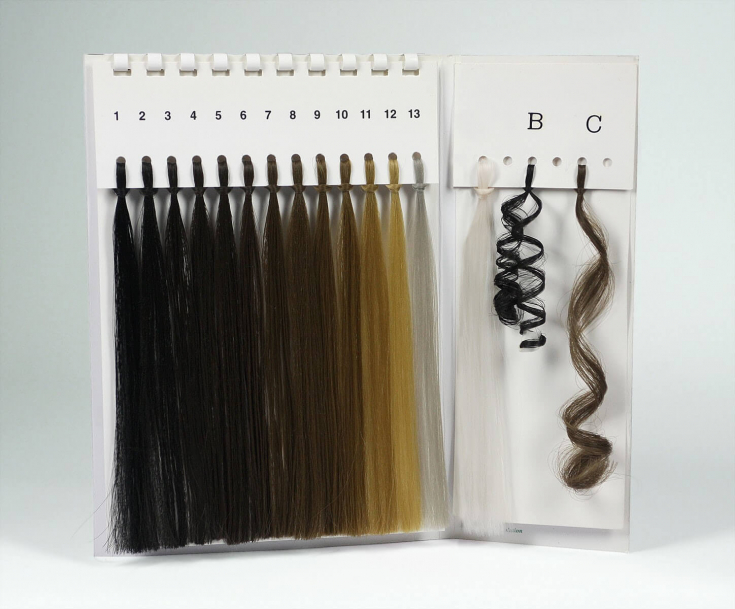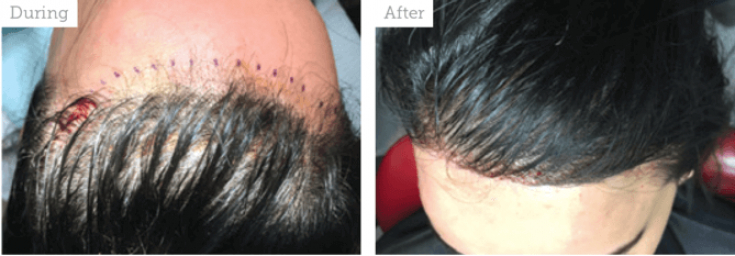Hair loss can be a serious problem for both men and women. According to a study conducted in 2005, 62% of men stated that hair loss would affect their self-esteem.
For women, a study on the psychological impact of alopecia showed that about 40% of alopecia patients had marital problems, and about 63% claimed to have had problems at work. With this in mind, treatment of hair loss occupies a strong place in aesthetic medicine.
Surgical treatment, such as follicular unit transplantation, is generally considered the most common treatment for hair loss.
However, less invasive treatments are currently available, one of them is the recently launched procedure using polyamide implant for artificial hair.
For more information on the use of biofiber for the treatment of alopecia, please visit estet-portal.com in this article.
- What is biofiber and how does it help in the treatment of alopecia
- Algorithm of the procedure for implantation of biovolon
What is biofiber and how does it help in the treatment of alopecia
Biofibre (Biofibre) can be used in hair restoration procedures when hair transplantation may not be suitable for the patient, such as lack of donor hair, atrophic or scarring of the scalp.
Biofibre is also recommended for patients seeking fast results with minimally invasive intervention and fast post-procedure healing.
In addition, Biofibre can be used as a combination method with other hair treatments to achieve a higher level of hair density. The device can implant between 800 and 1200 hairs per hour.
Biofibre fibers are fibers identical to the thickness of normal hair, made from polyamide and inorganic pigments.

13 different shades of biofiber are available, which can be mixed to create a unique shade of the patient's hair.
Hair in various lengths and textures, including straight, wavy, curly or Afro.
Follow us on Telegram!
Algorithm of biofiber implantation procedure
After the consultation, the first step before the procedure is a small implantation session of 100-200 fibers to observe the patient for one to two months in order to check for possible rejection or allergy to artificial hair.
If there is no reaction after one or two months, you can proceed to full implantation of the hair.

The procedure is contraindicated in patients suffering from autoimmune scalp conditions such as psoriasis and active alopecia areata.
The day before the procedure, the patient should start taking a systemic antibiotic broad spectrum.
The biofiber fibers are implanted one after the other in a radius of 45°, leaving a space of 2 mm between each implant, following the natural pattern of the hair. Implantation is performed by an automatic implanter that passes Biofibre through the epidermis, dermis, and subcutaneous layer.
A fibrosis develops around the node located at the end of the fiber implanted in the scalp, due to which the biofibers are fixed and can withstand 350-450 grams of traction.
Biofibre Hair Implantation – optimal remedy for hair loss
At the end of the procedure, the implantation area is cleaned and disinfected with an antiseptic solution, avoiding any stretching of the fibers that may lead to unwanted hair loss.
The number of treatments required depends on the size of the area to be implanted and the number of fibers the patient requires.
In the first session, it is recommended to implant 1500-2000 fibers, and in subsequent sessions up to 3000 fibers each time with an interval of two to two and a half months.
After hair implantation, the patient receives systemic antibiotic therapy for a week, sometimes along with antihistamines. It is recommended to avoid cutting your hair for two weeks to avoid the risk of infection. The patient can lead a normal active lifestyle. The results of the procedure can last an average of five to seven years.
Tamerlan Kadiev: Proper graft sampling – the secret of effective hair transplantation







Add a comment